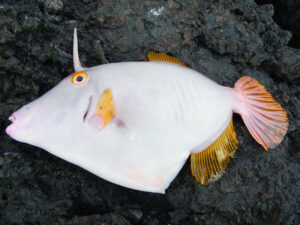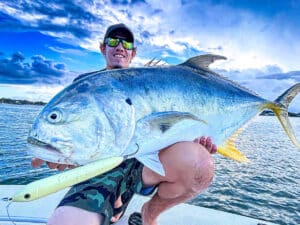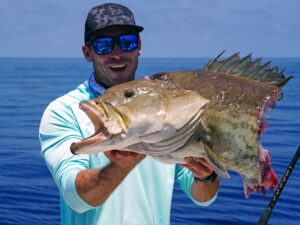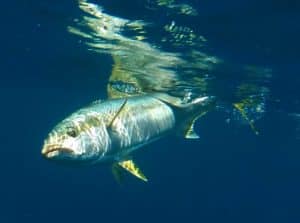
Do you have a photograph of a fish you can’t identify? If so, we’re up for the challenge, and would welcome the opportunity to share your photo and its ID with an international audience of enthusiasts. (Whether published or not, we will personally respond to every inquiry.) Email your jpgs, as large/hi-res as possible, to: fishfacts@sportfishingmag.com.
I recently read a short article in a fishing magazine extolling the (generally unheralded) virtues of cutlassfish (Trichiurus lepturus) as a fun gamefish in its own right. Having intentionally targeted and caught them, Fish Facts couldn’t agree more.
However, Fish Facts feels the need to set the record straight since the article stated that cutlassfish “use their sharp pointed tail to slash like a knife.” Not so much. It’s true that the odd critters lack any caudal structure: Their body at the stern end simply tapers right down to a point. But sharp? As with the long — rather elegant — dorsal fin that runs the length of the body, the tail is soft, tapering to a thin filament and lacking any spine. Sure, if you grab a cutlassfish, it will squirm and wave its body around, but that tail won’t do any damage.
On the other hand, keep your fingers out of its mouth. One look at the dagger-like fangs should dissuade even the foolhardy. That said, I’ve noticed when handling these fish that they’re generally pretty flaccid creatures and easy to handle, not nearly as fierce as they appear.
About the Cutlassfish
While on the subject, here’s a bit more information on a species that is unique, fascinating and widely available around the world in many inshore and coastal waters.
Cutlassfish are widely called ribbonfish, particularly by Gulf anglers. You won’t find them listed with that name in the IGFA book, though. Their official common name, per the authoritative Fishbase, is largehead hairtail. Cutlassfish (hairtails) can exceed seven feet. The current IGFA all-tackle record stands at 11 pounds, 5 ounces, caught on a saury off Japan in 2020.
The species is characterized by its solid, gleaming silver, chrome-plated hue, its flattened body rather like an eel after an encounter with a steamroller. The cutlass lacks scales. And while you couldn’t tell by the indifference of U.S. anglers, in much of the world it’s a highly sought (and marketed) commercial fish. I’ve filleted and eaten a number of them. Taste is subjective, but I thought they were good — not my fave, but certainly not bad. While few are eaten, many are used as bait in offshore fisheries and particularly by serious kingfish enthusiasts.
One of the most striking visuals I recall from a day in the lower Patuxent River in Maryland last year was my sounder screen. Turned out that that cutlassfish were all over the river, and it proved to be great fun on diving crankbaits. Their strikes are vicious, especially on ultralight tackle. But what really stayed with me from that day was the sounder. It stayed lit up with dozens and dozens of cutlassfish, but they didn’t present like any typical predator. That’s because their hunting style is to ambush small fish by drifting motionless vertically, head toward the surface. So they looked nothing like what I’m used to seeing when marking fish: My screen was loaded with narrow vertical slashes.








